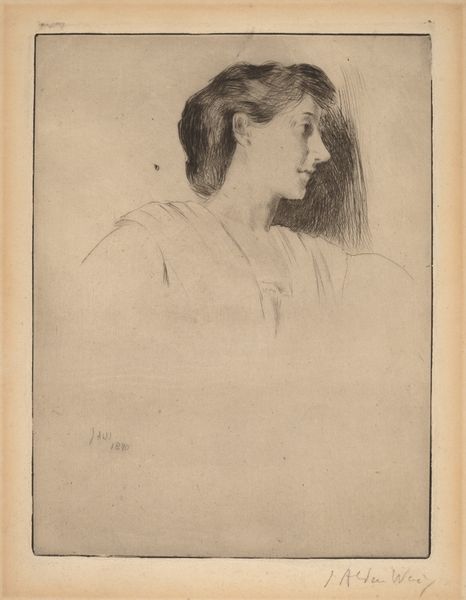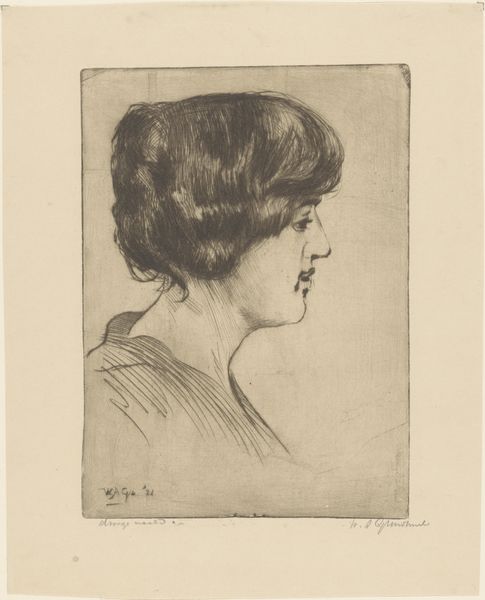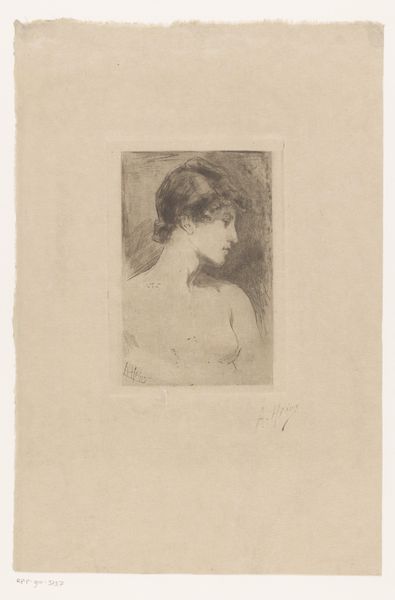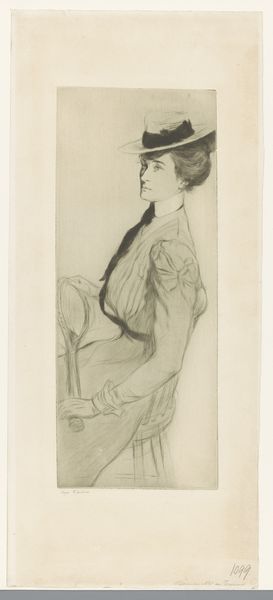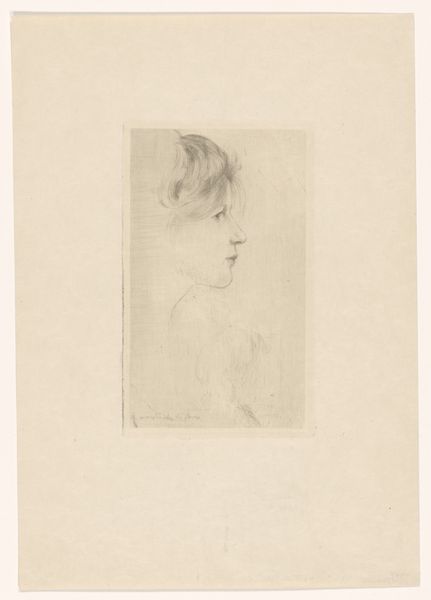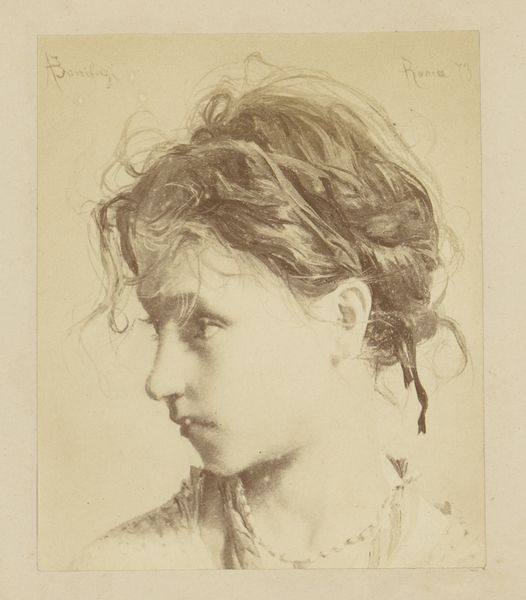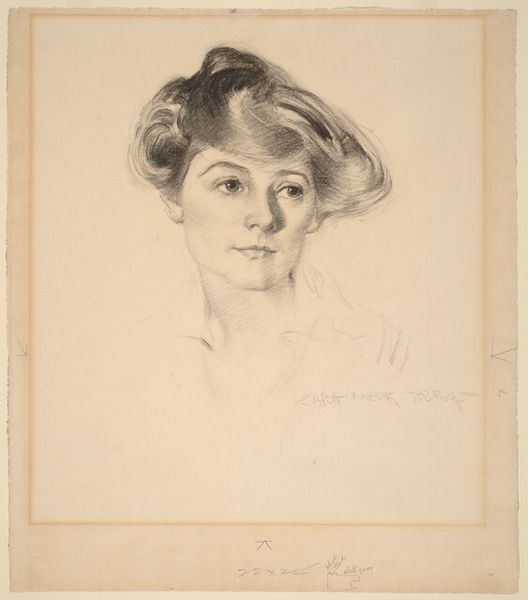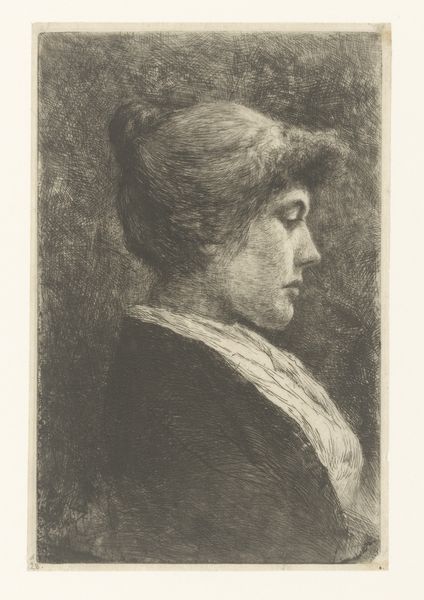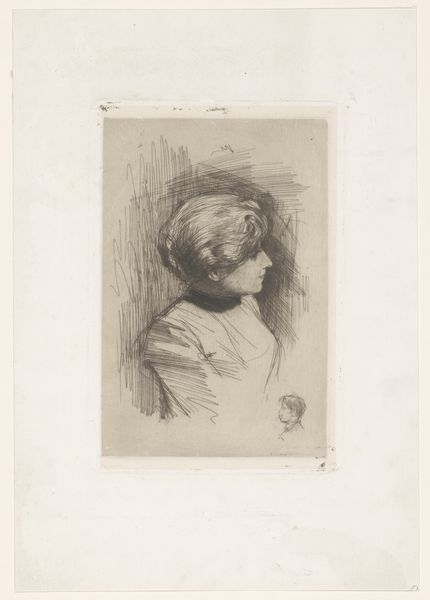
drawing, pencil
#
portrait
#
pencil drawn
#
drawing
#
pencil drawing
#
pencil
#
academic-art
#
realism
Dimensions: height 351 mm, width 261 mm
Copyright: Rijks Museum: Open Domain
Editor: Here we have Pieter de Josselin de Jong's "Vrouwenkop," created sometime between 1871 and 1906. It's a pencil drawing, and I’m struck by how simple yet evocative it is. It's like a fleeting glimpse of someone's inner world captured on paper. What stands out to you in this piece? Curator: What I find compelling is how this drawing participates in the broader artistic dialogues around representing women during that period. It sits intriguingly between academic art and a burgeoning realism. This tension makes it significant because academic art served the interests of the establishment while realism served to document society and those that comprise it. De Jong straddles both realms. Have you ever thought about this relationship when looking at art? Editor: That's fascinating! I hadn't considered it that way. So, the drawing becomes almost like a quiet act of observation and commentary, pushing against traditional expectations of portraiture and female representation? Curator: Precisely! Think about the context: museums and galleries were solidifying their roles in shaping artistic taste and what was considered "worthy" of display. Works such as this served to solidify national identity, particularly with respect to notions of morality, propriety, and race. To some degree this is evident by its presence within the Rjiksmuseum, one of the first established institutions dedicated to promoting and showcasing Dutchness through a social lens. It subtly challenges the established norms of art. How does knowing this context change your initial impression? Editor: It makes me appreciate the piece even more! Seeing it not just as a drawing of a woman but as part of a bigger cultural conversation makes it richer. It feels like it holds more power than I initially thought. Curator: Exactly, the drawing prompts us to question what it means to represent someone truthfully. Appreciating art is often about recognizing it’s impact on public opinion, rather than a private interaction between one and the artwork. Editor: I hadn't really thought about the social dimension, so thanks for opening my eyes to a completely new way to view "Vrouwenkop". Curator: My pleasure! Keep questioning, keep observing; art history is all about uncovering these layers of meaning.
Comments
No comments
Be the first to comment and join the conversation on the ultimate creative platform.

